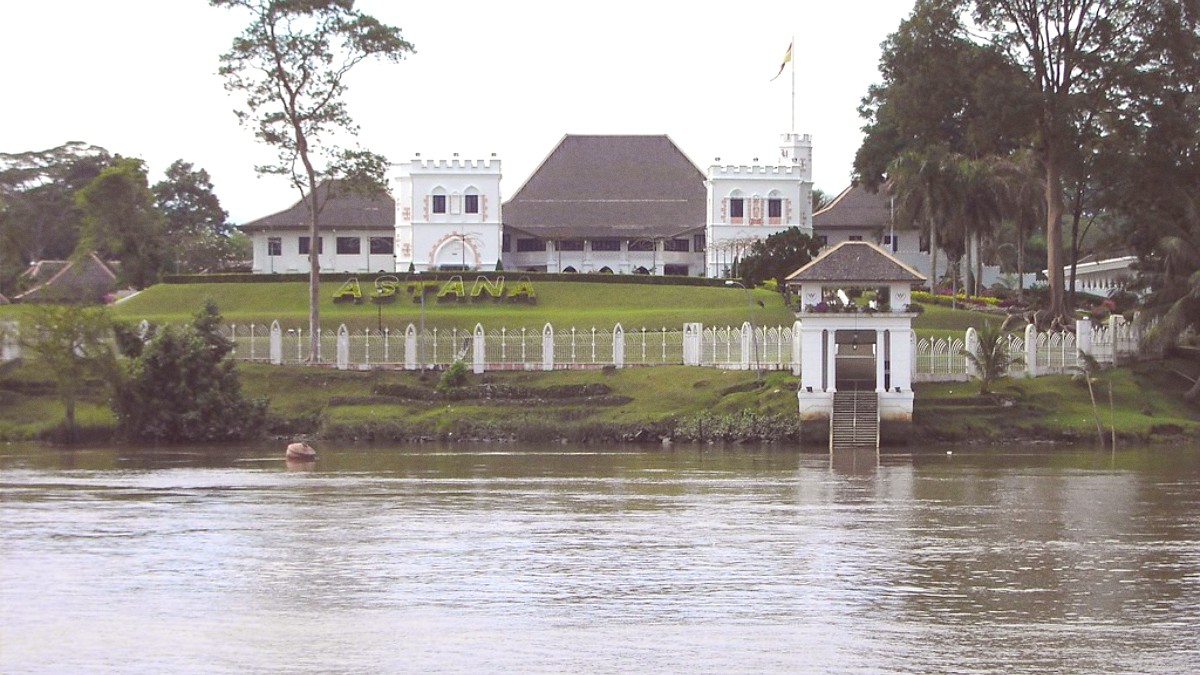
Malaysian Borneo Sarawak, Malaysia
The city's cuisine reflects centuries of interaction between different ethnic groups. Each community brought its own cooking styles, ingredients, and traditions. This fusion created dishes found only in Sarawak.
Fresh seafood, abundant tropical fruits, and local herbs and spices are present. The Sarawak River, historically a trading route, brought ingredients and influences from diverse sources.
Local cuisine features distinct ingredients like Belacan (shrimp paste) and Sarawak pepper. Durian, ginger, lemongrass, and coconut milk appear frequently. Jungle ferns like midin and paku pakis are popular local vegetables.
Flavors in Kuching range from savory and spicy, often with a chili kick, to sweet and sour. This creates a balanced and exciting palate.
Sarawakian cuisine has its own identity. Distinctive dishes include Sarawak Laksa, Kolo Mee, and Midin. Influences from other parts of Malaysia and Borneo are also present.
A rich, flavorful noodle soup. It features a complex spice paste, coconut milk, prawns, shredded chicken, and omelet strips.
Find at: Choon Hui Cafe, Laksa King (at Top Spot Food Court), Mom's Laksa.
Dry tossed noodles, usually served with minced pork or char siu (BBQ pork). It often comes with fish balls or wontons.
Find at: Lau Ya Keng Food Court, Chong Choon Cafe, and many local coffee shops.
Midin is a local jungle fern, stir-fried with belacan or garlic. Manok Pansoh is an Iban chicken dish, cooked with herbs in bamboo stalks.
Find Midin at: Most seafood restaurants, Top Spot Food Court. Find Manok Pansoh at: Restaurants specializing in Dayak cuisine, like Lepau Restaurant.
A multi-layered cake famous for its intricate patterns and various flavors. It is denser and richer than typical cakes. Find at: Mira Cake House or Dayang Salhah Kek Lapis.
Cendol: A shaved ice dessert with green rice flour jellies, coconut milk, and palm sugar syrup. Tuak: Traditional Dayak rice wine, an alcoholic beverage for festivals. Other beverages include Kopi O/Teh O, Three Layer Tea, and Milo.
Kuching has limited dedicated fine dining establishments. Upscale hotel restaurants offer refined dining experiences with international and fusion cuisine.
An abundance of mid-range restaurants contain a mix of local and international cuisines. Many modern cafes and bistros are present.
This is where Kuching's culinary heart beats. Hawker centers, food courts, and coffee shops are popular.
A traditional wet market. Fresh produce, meats, and some cooked food stalls are present. It is a glimpse into local daily life.
Authentic local daily life.
Operates daily but peaks on weekends. A wide array of local produce, street food, and handicrafts are present.
Great place to sample unique local snacks.
Pizza, pasta, burgers
BBQ, sushi, ramen
Curries, biryani
In malls and popular dining areas.
Halal food is widely available due to the Muslim majority. Look for Halal certification signs. Kosher options are extremely rare.
Travelers requiring Kosher food should plan to stick to fresh fruits, vegetables, or bring certified items from home.
Gluten-free options present a challenge, as many local dishes contain soy sauce or wheat-based noodles.
Communicate allergies clearly, ideally in Malay. Carry an allergy card in Malay if allergies are severe.
Seafood and nut allergies are common. Exercise caution and inform staff explicitly. Carry an allergy card in Malay if your allergies are severe.
Kosher options are extremely rare in Kuching. Travelers needing Kosher food should plan to bring pre-packaged certified Kosher items.
Glutinous rice cooked in bamboo.
Various glutinous rice cakes and festive cookies.
Always check local calendars for specific food events and festivals.
Some restaurants and tour operators offer dining experiences along the Sarawak River, a scenic backdrop with views of Darul Hana Bridge.
Evening cruises are popular for illuminated views.
Restaurants specializing in traditional Dayak cuisine often feature unique ingredients from the rainforest.
A taste of truly local and traditional Borneo flavors.
A traditional wet market where you find fresh produce, meats, and some cooked food stalls. A glimpse into local daily life.
A large market that peaks on weekends. It is a wide array of local produce, street food, and handicrafts. An authentic local shopping experience.
Famous for its fresh seafood, this open-air food court sits on a rooftop. You choose your seafood, and a stall cooks it to order.
Be open to new flavors and experiences.